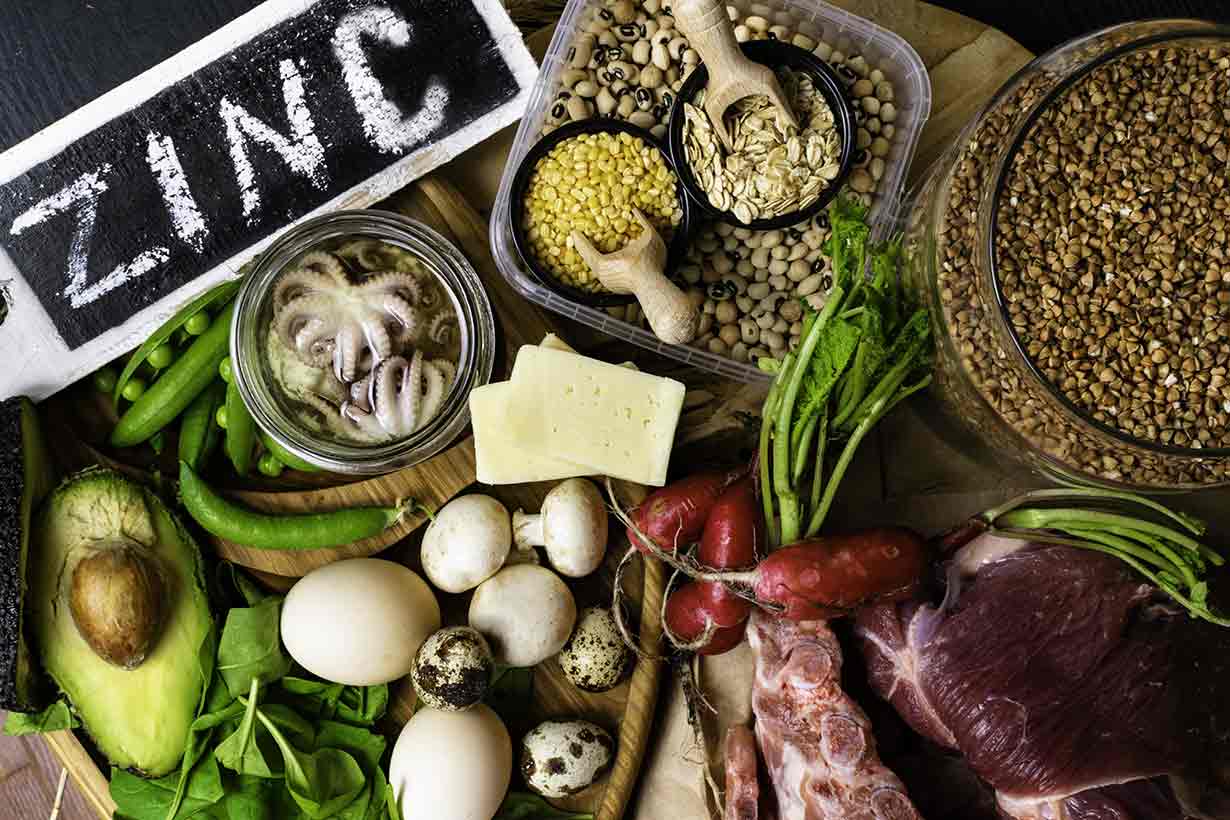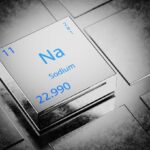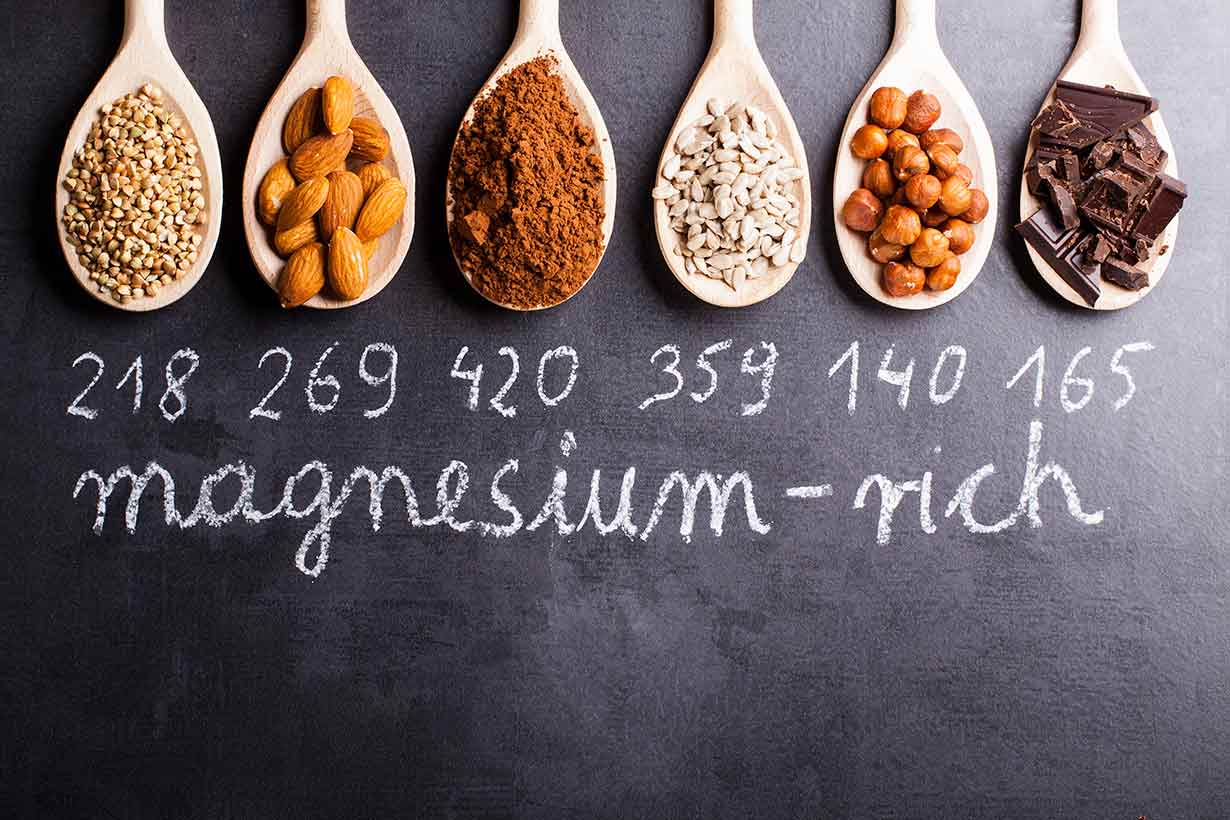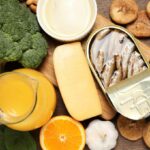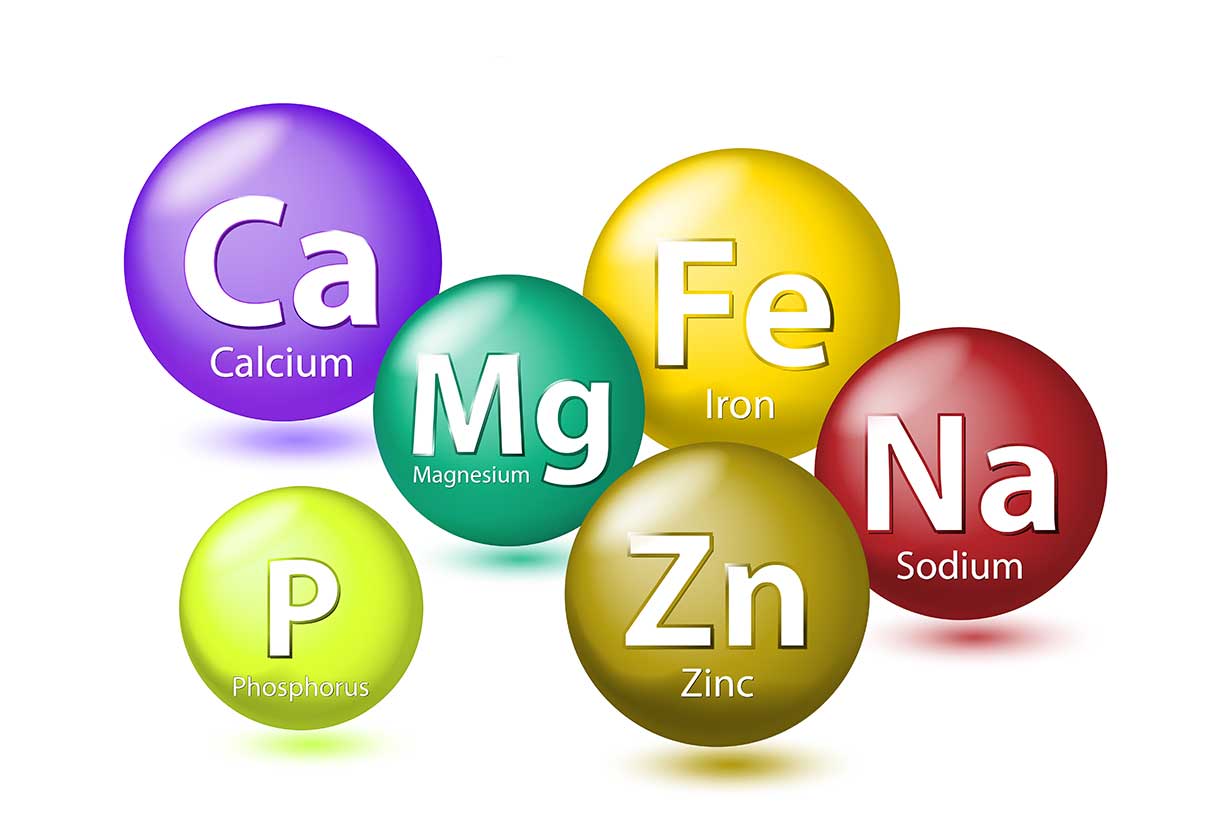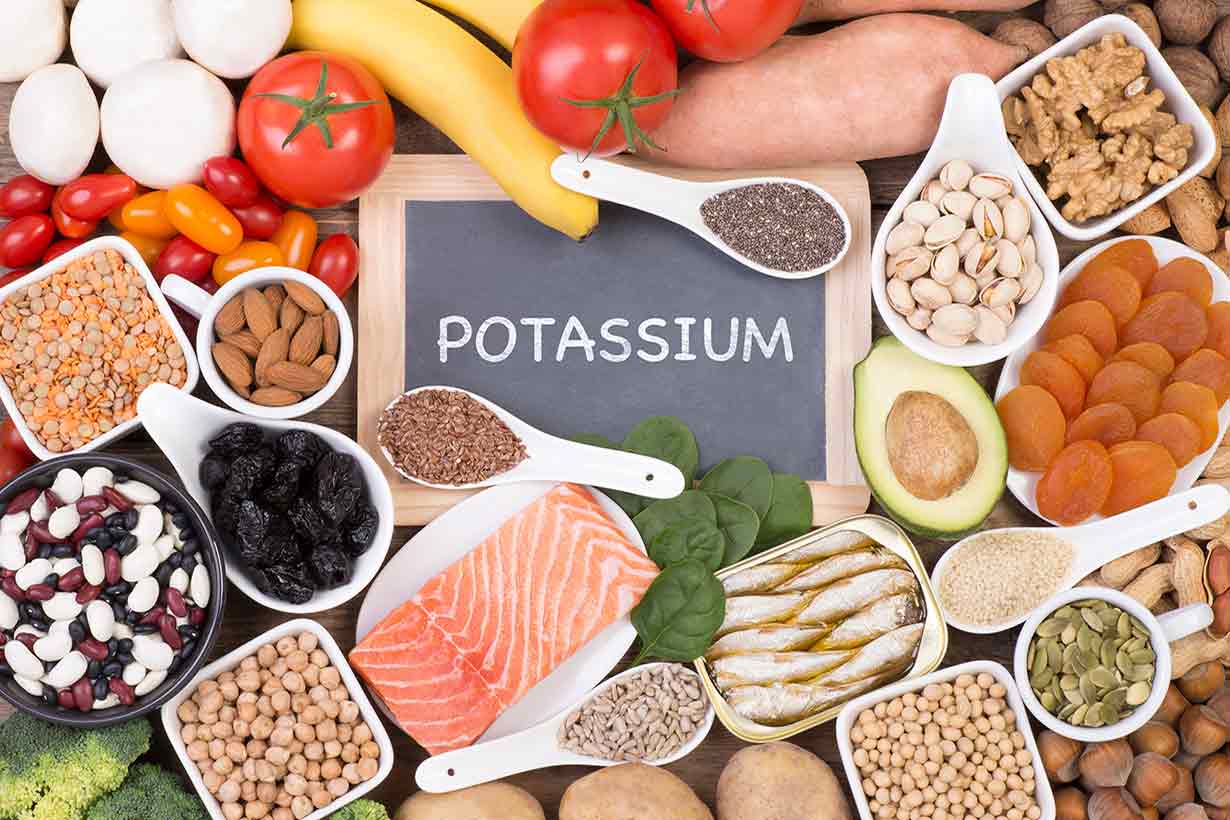Selenium is an essential mineral with several vital functions for human health.
This article examines the best dietary sources and lists foods high in selenium.
The amount of selenium per 100 grams and per typical serving is available for each food.
Table of contents
What Is Selenium?
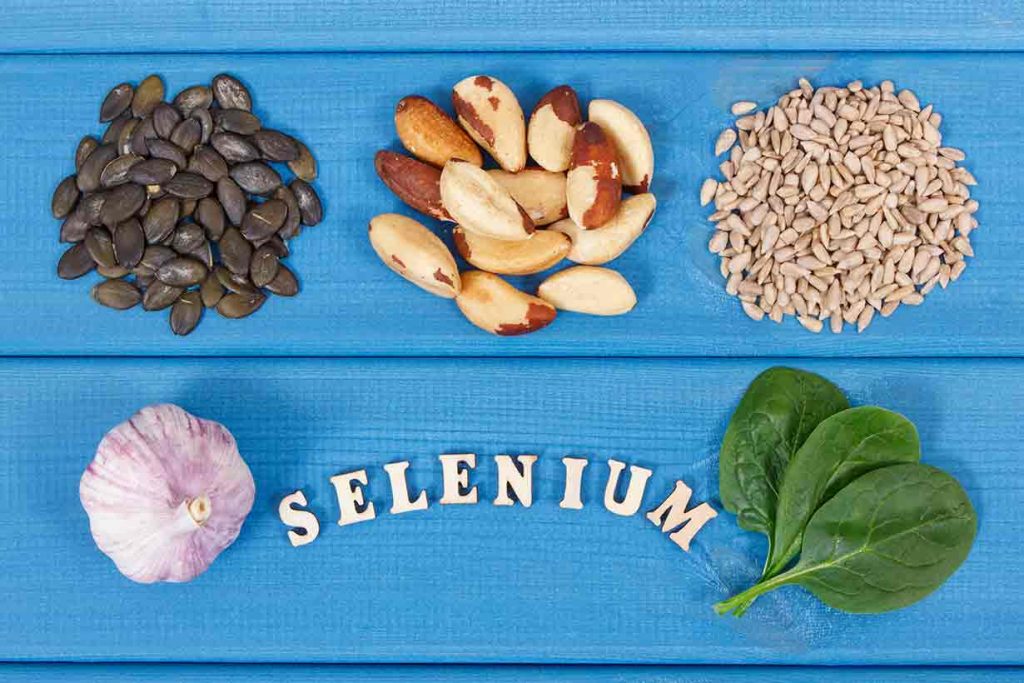
As an essential mineral, humans need to obtain selenium from their diet. Selenium has a chemical symbol of ‘Se,’ and it has important antioxidant properties (1).
Among the mineral’s health effects, selenium helps to keep the body healthy and protects against DNA damage (2).
The amount of selenium in crops depends on the local soil’s selenium status, which can vary nationally and internationally (3, 4).
Selenium deficiency is rare in the United States and Europe. However, estimates suggest up to one billion people might have an insufficient selenium intake globally (5, 6).
Meat, nuts, seafood, and whole grains are among the best dietary sources of selenium.
How Much Selenium Do We Need?
The amount of selenium we require mainly depends on our age.
Recommended Dietary Allowances
Recommended Dietary Allowances (RDAs) have been set for selenium by the Food and Nutrition Board of the Institute of Medicine of the National Academies.
Based on the RDAs, the recommended selenium intake differs by age and pregnancy and breastfeeding status, as shown below (7):
| Age and situation | Selenium RDA |
|---|---|
| < 6 months old | 15 mcg (adequate intake*) |
| 7 months – 3 years old | 20 mcg (adequate intake*) |
| 4-8 years | 30 mcg |
| 9-13 years | 40 mcg |
| 14-18 years | 55 mcg |
| >19 years | 55 mcg |
| During pregnancy | 60 mcg |
| During lactation | 70 mcg |
* As shown, there is only an ‘adequate intake’ level set for children under three years old rather than an RDA. Adequate intake levels are set when there is insufficient evidence to provide an RDA.
Daily Values
Daily values (% DV) have also been set for selenium by the Food and Drug Administration (FDA). Daily values are simple reference amounts for how much of a nutrient we should consume daily based on a typical 2000-calorie diet.
The daily value for selenium is 55 mcg per day (8).
Foods High In Selenium
The following list of foods shows some of the best dietary sources of selenium.
The amount of selenium per 100 grams and per typical serving is presented for each food.
All nutritional data for selenium content is from the USDA’s FoodData Central database.
Daily values have been calculated using USDA data and the FDA’s Daily Values.
1) Barley, Hulled
| Selenium per 100 grams | Selenium per 1/2 cup (92g) serving |
|---|---|
| 37.7 mcg (69% DV) | 34.7 mcg (63% DV) |
Barley is a good source of selenium, with a half-cup serving providing 63% of the mineral’s daily value (9).
2) Brazil Nuts
| Selenium per 100 grams | Selenium per oz (28.35g) serving |
|---|---|
| 1920 mcg (3491% DV) | 544 mcg (989% DV) |
Gram for gram, Brazil nuts are the best dietary source of selenium. An ounce serving, equivalent to roughly six Brazil nuts, provides 989% of the daily value (10).
Brazil nuts are also an excellent source of phosphorus.
3) Chicken, breast, meat only, cooked
| Selenium per 100 grams | Selenium per chicken breast (172g) serving |
|---|---|
| 27.6 mcg (50% DV) | 47.4 mcg (86% DV) |
A 172-gram cooked chicken breast offers 86% of the daily value for selenium (11).
4) Clams, cooked
| Selenium per 100 grams | Selenium per 3-ounce (85g) serving |
|---|---|
| 64 mcg (116% DV) | 54.4 mcg (99% DV) |
Clams provide high levels of selenium; a three-ounce (85-gram) serving provides 99% of the daily value (12).
5) Conch, cooked
| Selenium per 100 grams | Selenium per 127-gram cup serving |
|---|---|
| 40.3 mcg (73% DV) | 51.2 mcg (93% DV) |
Conch is a type of gastropod mollusk (shellfish) that contains a wide range of nutrients. Among these nutrients, it has a high amount of selenium, with 93% of the daily value per cup serving (13).
6) Couscous, cooked
| Selenium per 100 grams | Selenium per 157-gram cup serving |
|---|---|
| 27.5 mcg (50% DV) | 43.2 mcg (79% DV) |
Couscous provides a good selenium source; a cup serving contains 79% of the daily value (14).
7) Cuttlefish, cooked
| Selenium per 100 grams | Selenium per 3-ounce (85g) serving |
|---|---|
| 89.6 mcg (163% DV) | 76.2 mcg (139% DV) |
Cuttlefish is one of the best providers of selenium from all food groups. A three-ounce (85-gram) serving offers 139% of the mineral’s daily value (15).
8) Grouper, cooked
| Selenium per 100 grams | Selenium per 202-gram fillet |
|---|---|
| 46.8 mcg (85% DV) | 94.5 mcg (172% DV) |
With 94.5 mcg of selenium, a 202-gram fillet of grouper offers 172% of the daily value (16).
9) Ham, leg, lean, cooked
| Selenium per 100 grams | Selenium per 3-ounce (85g) serving |
|---|---|
| 49.9 mcg (91% DV) | 42.4 mcg (77% DV) |
A three-ounce (85-gram) serving of cooked lean ham leg supplies 77% of the daily value for selenium (17).
10) Herring, Atlantic, cooked
| Selenium per 100 grams | Selenium per 143-gram fillet |
|---|---|
| 46.8 mcg (85% DV) | 66.9 mcg (122% DV) |
Herring is one of the best seafood sources of selenium. On this note, a 143-gram fillet provides 122% of the daily value (18).
11) Kamut, cooked
| Selenium per 100 grams | Selenium per 172-gram cup |
|---|---|
| 31.9 mcg (58% DV) | 54.9 mcg (100% DV) |
Kamut, also known as Khorasan wheat, is among the best grain-based options for selenium. A 172-gram cup of kamut has 100% of the mineral’s daily value (19).
12) Kidney, pork, cooked
| Selenium per 100 grams | Selenium per 3-ounce (85g) serving |
|---|---|
| 312 mcg (567% DV) | 265 mcg (482% DV) |
Organ meats (offal) tend to be one of the best dietary sources of selenium; kidney contains more than most. For example, a 3-ounce (85-gram) serving of pork kidney provides 482% of the daily value (20).
13) Liver, lamb, cooked
| Selenium per 100 grams | Selenium per 3-ounce (85g) serving |
|---|---|
| 111 mcg (202% DV) | 94.4 mcg (172% DV) |
Liver is another significant selenium source; a three-ounce (85-gram) serving of lamb liver has 172% of the daily value (21).
14) Lobster, cooked
| Selenium per 100 grams | Selenium per 3-ounce (85g) serving |
|---|---|
| 73.1 mcg (133% DV) | 62.1 mcg (113% DV) |
Cooked lobster is a good source of numerous essential nutrients. It provides 113% of the daily value for selenium per three-ounce (85-gram) serving (22).
15) Mackerel, Atlantic, cooked
| Selenium per 100 grams | Selenium per 88-gram fillet |
|---|---|
| 51.6 mcg (94% DV) | 45.4 mcg (83% DV) |
Atlantic mackerel provides high levels of selenium, with an 88-gram fillet providing 113% of the daily value (23).
16) Oat Bran
| Selenium per 100 grams | Selenium per 94-gram cup serving |
|---|---|
| 45.2 mcg (82% DV) | 42.5 mcg (77% DV) |
Oat bran is a nutrient-rich grain-based product that offers high levels of selenium. A 94-gram cup serving contains 95% of the daily value (24).
Oat bran is also an excellent source of phosphorus.
17) Octopus, cooked
| Selenium per 100 grams | Selenium per 3-ounce (85g) serving |
|---|---|
| 89.6 mcg (163% DV) | 76.2 mcg (139% DV) |
Octopus is a significant source of selenium; a three-ounce (85-gram) serving offers 139% of the daily value (25).
18) Oysters, Eastern, cooked
| Selenium per 100 grams | Selenium per 3-ounce (85g) serving |
|---|---|
| 77.5 mcg (141% DV) | 65.9 mcg (120% DV) |
With 120% of the daily value per three-ounce (85-gram) serving, oysters are a substantial source of selenium (26).
Oysters are also one of the best dietary sources of zinc.
19) Pork chop, lean, cooked
| Selenium per 100 grams | Selenium per 146-gram chop (lean) |
|---|---|
| 45.7 mcg (83% DV) | 66.7 mcg (121% DV) |
Lean pork chops offer a significant selenium source. For example, a 146-gram pork chop provides 121% of the daily value (27).
20) Salmon, Atlantic, farmed, cooked
| Selenium per 100 grams | Selenium per 178-gram half fillet |
|---|---|
| 41.4 mcg (75% DV) | 73.7 mcg (134% DV) |
All salmon offers a good source of selenium, but there is some slight variation between different varieties. Farmed Atlantic salmon provides 134% of the daily value for selenium per cooked half fillet (28).
21) Salmon, Atlantic, wild, cooked
| Selenium per 100 grams | Selenium per 154-gram half fillet |
|---|---|
| 46.8 mcg (85% DV) | 72.1 mcg (131% DV) |
Gram for gram, wild Atlantic salmon offers slightly more selenium content than farmed Atlantic salmon. However, on average, the size of wild salmon is slightly smaller than farmed salmon.
A half fillet of cooked wild Atlantic salmon provides 131% of the daily value for selenium (29).
22) Sardines, canned in oil
| Selenium per 100 grams | Selenium per 92-gram can |
|---|---|
| 52.7 mcg (96% DV) | 48.5 mcg (88% DV) |
A 92-gram can of sardines offers 88% of selenium’s daily value (30).
Canned sardines are also a convenient source of calcium and protein, vitamin B12, and many other nutrients.
23) Shiitake Mushrooms, cooked
| Selenium per 100 grams | Selenium per 145-gram cup serving |
|---|---|
| 24.8 mcg (45% DV) | 36 mcg (65% DV) |
Shiitake mushrooms are a popular mushroom variety that offers a good source of selenium. The mushrooms provide 65% of the daily value per 145-gram cup serving (31).
24) Snapper, cooked
| Selenium per 100 grams | Selenium per 170-gram fillet |
|---|---|
| 49 mcg (89% DV) | 83.3 mcg (151% DV) |
Snapper provides a lot of selenium with a 170-gram fillet offering 151% of the daily value (32).
25) Sunflower Seeds
| Selenium per 100 grams | Selenium per ounce (28.35g) serving |
|---|---|
| 80.4 mcg (146% DV) | 22.8 mcg (41% DV) |
Sunflower seeds are one of the best plant-based selenium sources. An ounce (28.35g) serving gives 41% of the daily value (33).
26) Swordfish, cooked
| Selenium per 100 grams | Selenium per 106-gram piece |
|---|---|
| 68.5 mcg (125% DV) | 72.6 mcg (132% DV) |
Swordfish is another selenium-rich fish option; a 106-gram piece of swordfish provides 132% of the daily value (34).
27) Tofu, firm, prepared with calcium sulfate
| Selenium per 100 grams | Selenium per 126-gram half cup |
|---|---|
| 17.4 mcg (32% DV) | 21.9 mcg (40% DV) |
Firm tofu provides a moderately high level of selenium; a half-cup serving provides 40% of the daily value (35).
28) Tuna, yellowfin, cooked
| Selenium per 100 grams | Selenium per 3-ounce (85g) serving |
|---|---|
| 108 mcg (196% DV) | 91.8 mcg (167% DV) |
Tuna is high in selenium; the yellowfin variety provides 167% of the daily value per three-ounce (85-gram) serving (36).
Other types of tuna, such as canned tuna, are also a good source of selenium and other nutrients like vitamin B12 and iodine.
29) Whelk, cooked
| Selenium per 100 grams | Selenium per 3-ounce (85g) serving |
|---|---|
| 89.6 mcg (163% DV) | 76.2 mcg (139% DV) |
Like conch, whelk is another gastropod mollusk shellfish with a high selenium content. Per three-ounce (85-gram) serving, it offers 139% of the mineral’s daily value (37).
30) Wholewheat Pasta, cooked
| Selenium per 100 grams | Selenium per 151-gram cup serving |
|---|---|
| 36.3 mcg (66% DV) | 54.8 mcg (100% DV) |
Wholewheat pasta offers good levels of selenium; a 151-gram cup serving provides 100% of the daily value (38).
Which Foods Have the Most Selenium Per Typical Serving?
The following table shows the foods with the highest selenium content based on their typical serving size, allowing an at-a-glance comparison.
| Rank | Food Name | Serving Size | Selenium Content |
|---|---|---|---|
| 1 | Brazil nuts | 1 oz (28.35g) | 544 mcg (989% DV) |
| 2 | Pork kidney, cooked | 3 oz (85g) | 265 mcg (482% DV) |
| 3 | Grouper, cooked | 202g fillet | 94.5 mcg (172% DV) |
| 4 | Lamb liver, cooked | 3 oz (85g) | 94.4 mcg (172% DV) |
| 5 | Tuna, yellowfin, cooked | 3 oz (85g) | 91.8 mcg (167% DV) |
| 6 | Snapper, cooked | 170g fillet | 83.3 mcg (151% DV) |
| 7 | Octopus, cooked | 3 oz (85g) | 76.2 mcg (139% DV) |
| 7 | Cuttlefish, cooked | 3 oz (85g) | 76.2 mcg (139% DV) |
| 7 | Whelk, cooked | 3 oz (85g) | 76.2 (139% DV) |
| 10 | Salmon, Atlantic, farmed, cooked | 178g 1/2 fillet | 73.7 mcg (134% DV) |
| 11 | Swordfish, cooked | 106g piece | 72.6 mcg (132% DV) |
| 12 | Salmon, Atlantic, wild, cooked | 154g 1/2 fillet | 72.1 mcg (131% DV) |
| 13 | Herring, Atlantic, cooked | 143g fillet | 66.9 mcg (122% DV) |
| 14 | Pork chop, lean, cooked | 146g chop | 66.7 mcg (121% DV) |
| 15 | Oysters, Eastern, cooked | 3oz (85g) | 65.9 mcg (120% DV) |
| 16 | Lobster, cooked | 3 oz (85g) | 62.1 mcg (113% DV) |
| 17 | Kamut, cooked | 172g cup | 54.9 mcg (100% DV) |
| 18 | Wholewheat pasta, cooked | 151g cup | 54.8 mcg (100% DV) |
| 19 | Clams, cooked | 3 oz (85g) | 54.4 mcg (99% DV) |
| 20 | Conch, cooked | 127g cup | 51.2 mcg (93% DV) |
| 21 | Sardines, canned in oil | 92g can | 48.5 mcg (88% DV) |
| 22 | Chicken breast, meat only, cooked | 172g breast | 47.4 mcg (86% DV) |
| 23 | Mackerel, Atlantic, cooked | 88g fillet | 45.4 mcg (83% DV) |
| 24 | Couscous, cooked | 157g cup | 43.2 mcg (79% DV) |
| 25 | Oat bran | 94g cup | 42.5 mcg (77% DV) |
| 26 | Ham, leg, lean, cooked | 3 oz (85g) | 42.4 mcg (77% DV) |
| 27 | Shiitake mushrooms, cooked | 145g cup | 36 mcg (65% DV) |
| 28 | Barley, hulled | 92g 1/2 cup | 34.7 mcg (63% DV) |
| 29 | Sunflower seeds | 1 oz (28.35g) | 22.8 mcg (41% DV) |
| 30 | Tofu, firm | 126g 1/2 cup | 21.9 mcg (40% DV) |
Final Thoughts
This article shows that a wide range of food provides substantial selenium content.
Among these selenium-rich foods, organ meats, seafood, nuts and seeds, and whole grains offer the highest levels.

